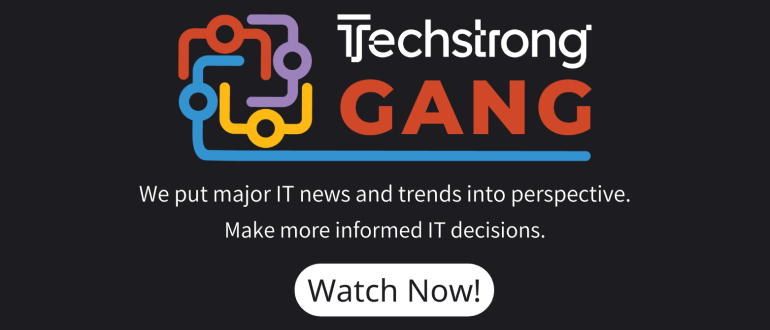The last two years have been marked by significant downsizing in technology companies. As large layoffs at companies like Amazon, Meta and Google make major headlines, there is a general shift away from the “spending cash and growing fast” mindset that free capital and strong growth during the pandemic launched in the tech industry. The name of the game is to be more conservative with spending, and that mindset will drive a lot of investments in the next year. While these cost pressures may feel challenging to technology organizations, there are a few key opportunities as well. Many trends are starting, sustaining and ending, so let’s focus on the top six likely to drive changes in the industry in 2024 and beyond.
1. AI—Specifically Generative AI—Move Right on the Hype Cycle
While AI is not new, OpenAI and ChatGPT have created an amazingly accessible and powerful tool that is positioned to drive a lot of value. The hype cycle is still in full swing as dozens of new uses of the technology hit the market daily, and if you’re not trying to build a generative AI-enabled product, you’re getting asked when you will start. In 2024, we will likely see LLMs move into the trough of disillusionment as inflated expectations and projects don’t all play out. However, those organizations with generative AI products that truly deliver value to users should expect to see massive growth. Technology organizations will need to make hard decisions about AI products. You will either find traction in the next year and see huge growth or quickly find it doesn’t work and shift focus back to non-AI products.
2. Developer Experience Gains Momentum
While DX has been talked about for years, we’re seeing new investments in tools that empower developers. This trend is partially born out of a need to reduce tool and system sprawl for engineering teams, to empower teams and allow them to move faster and to improve efficiency. While you may not build or buy a DX platform, you will likely start a DX team or committee that better represents the folks building your software. This will lead to some great internal changes and key efficiencies getting attention that may have been previously overlooked. The wonderful thing about this trend is that it both brings efficiencies to the organization and makes developers’ lives easier. It’s a win-win!
3. Increased Pressure to Reduce Costs
Even for organizations that have avoided layoffs, most are seeing pressure to shift into a leaner existence. This often means critically looking at all sources of spending and taking on new projects to optimize them. Maybe a cloud re-platform can reduce hosting spend by 20%, or maybe you start looking to remove or combine SaaS tools to reduce seats. You may even see hiring freezes for critical teams. Organizations will have to embrace other trends to increase the efficiencies of their teams to meet business demands here. Don’t be surprised to hear “do more with less” become a mantra around the office.
4. Increased Accountability Through Data
While data platforms for technology organizations continue to grow, teams are finding that it’s not enough to just measure a few metrics. Organizations will be required increasingly to use the data they have to show they are delivering value. Partially due to increased pressures mentioned above, teams will need to become more predictable, and better at identifying and handling risk at every stage of development. It’s no longer enough to just build a great development engine, teams must ensure that the engine can power them to their destination.
5. ESG in Technology
Focus on DEI in technology continues to require significant investment, however, organizations are starting to consider a broader umbrella of social responsibility. This can range from considering the environmental impacts or carbon production of your servers to changing your software supply chain to avoid supporting particular organizations. These types of requirements are appearing sooner and more overtly in the software development process, and may significantly impact how teams choose to build or implement software.
6. DevSecOps Continues to Grow
There has been a renewed focus on security in recent years after some critical attacks exposed vulnerabilities in the software supply chain. It’s not surprising that security is now written into the fabric of how we build and deliver software. Teams are now expected to consider security at all stages of development from product planning to operation in production, and require additional experts, training and resources to both monitor and ensure compliance. Requirements for SaaS products continue to evolve as the last remnants of on-premises solutions evaporate, and teams should be prepared to move quickly as new threats are discovered and need to be patched.
As the technology industry prepares for 2024, it’s clear that innovation and adaptation will be the keys to success. From the continued evolution of AI and the growing focus on the developer experience to the imperative to reduce costs, increase accountability through data, embrace ESG practices and fortify security through DevSecOps, technology organizations face an exciting future.





